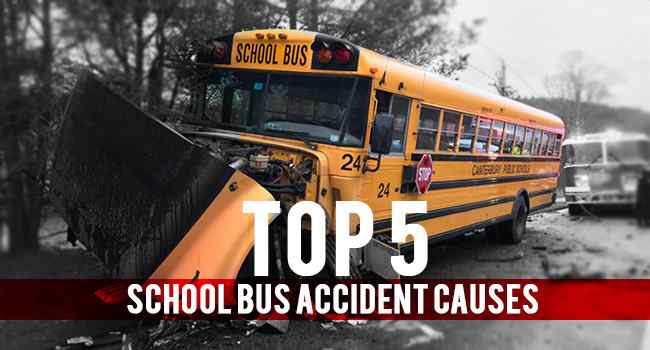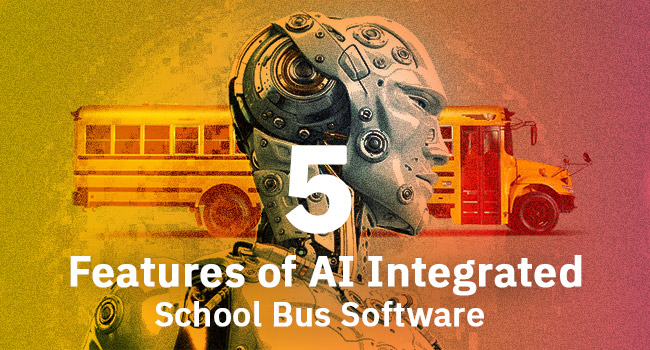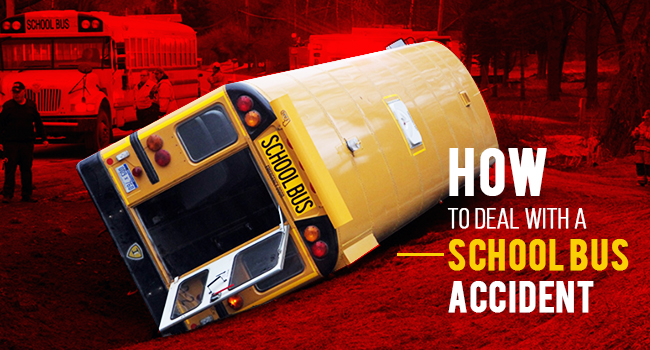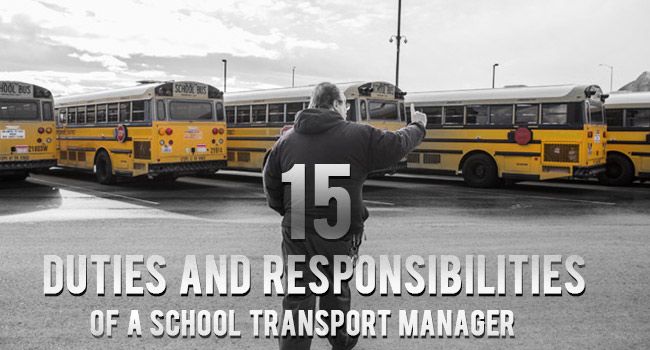School buses are treated with respect and consideration everywhere.
This respect is owed to the children who are the passengers of these buses.
Despite the traffic regulations and precautions are taken, the school buses sometimes met with accidents.
The rate of accidents is fairly low as compared to other traffic accidents.
But when it happens, normally it points towards the fault of driver and vehicle.
Here are 5 causes of school bus accidents.
Read Also
1. Driver Distraction
The main distraction for the driver occurs within the bus.
The misbehavior of students on the bus can take away the driver’s attention from the road.
Students tend to be very loud and noisy.
At times, they fight and assault each other.
These types of student behaviours distracts driver while driving which might lead to accidents.
Availability of an attendant or teacher on the bus to discipline the students can help driver to a large extent.
Mobile phones are another major distraction.
Though talking on the phone while driving is a punishable offence, many drivers still use their phones.
A call may divert a driver’s attention from the road which can lead to an accident.
But if any emergency call such as call from school authorities or parents, then it would be appropriate to use the phone after the vehicle is parked aside safely.
Drivers are often seen adjusting their viewing mirrors, adjusting their seating position, etc., while on the road.
These should have been well looked into before starting the trip.
They reach out for fallen objects; even eat, drink and smoke while driving, all of which can distract their mind.
One another factor that affects driver concentration is the loud audio/video music played inside the buses.
In school buses, it is not advisable to use music systems.
Factors of distraction outside the vehicle include the disorganized traffic in urban areas, the lack of space to manoeuvre the big vehicle, lack of proper pedestrian crossings, construction sites, accidents on the route, etc.
All these divert the attention of the driver from his task of driving safely.
Bad weather conditions like heavy rain, snow or sleet also make driving difficult, especially when it is required to stop quickly and safely.
2. Driver Fatigue
Driver fatigue automatically results in negligence causing accidents, sometimes tragic.
It is not really possible to monitor whether a driver had a restful sleep or gauge his state of alertness or awareness.
There exist devices to measure a driver’s eye closure rate.
The device triggers an alarm when it observes an unfamiliar pattern.
The prohibitive cost and scarce availability of such devices make it an impractical solution.
A tired driver is incapable of checking blind spots.
He fails to observe the rules of the road.
The bad road conditions too can affect his driving.
Read Also
Getting around potholes and construction sites on his daily pickup route can be mentally exasperating.
Fatigue is also caused when the driver is under the influence of illegal substances, alcohol and even prescribed drugs.
Small quantities of each reduce the level of concentration in a person thus decreasing the reaction times.
Larger quantities often result in blurred vision too.
This impairs proper vehicle operation.
The main onus of being vigilant rests on the bus driver as he is solely responsible for the safety of the students on his bus
3. Over Speeding
Over-speeding, as we all know, can cause disasters.
A school bus driver operates on a time constraint.
Delay in picking up students and traffic snarls causes the driver to speed and keep up the time schedule.
The driver’s power of judgment gets impaired at high speeds making accidents inevitable.
School buses, these days, are fitted with speed governors which limit fuel when the vehicle reaches a predetermined speed level.
This is highly essential as it is a deterrent to over-speeding and aggressive driving.
Many cases of reckless driving and road rage end up with disastrous results.
Read Also
Aggressive driving can be curtailed by imparting adequate training to drivers inculcating in them the necessity for safety and instilling a sense of responsibility.
It would be wise to employ drivers in their middle age with more years of experience and maturity which might often be missing in young fresh drivers.
Accidents due to animals and pedestrians crossing roads can be avoided if the buses travel within a safe speed limit.
4. Condition of the Vehicle
It is imperative that the school buses are in perfect running condition at all times.
Regular maintenance is essential to ensure safe day-to-day operations.
More so because the schools resort to buy second-hand or used buses as they find it more economically viable.
Ageing of buses and faulty equipment are a cause for concern.
Lapses in maintenance often lead to the breakdown of the vehicle.
Commonly accidents are caused because of faulty brake systems or worn out treads on tires.
Ignoring defects and repairing with used/second-hand parts increases the risk of failures.
Hence it is essential to do a daily routine check of brakes, accelerator, oil pressure, tire pressure, lights, and all other factors to ensure the vehicle’s roadworthiness.
In addition to these, the latch systems for the windows and door have to be checked for proper and smooth operation.
Emergency exits have to be easily accessible.
5. Passenger Over-Crowding
Over-crowding in school buses is very common.
School authorities try to optimize their bus routes to save time and fuel.
The passengers in a bus should not be according to the seating capacity of the particular bus.
Overloading affects the stability of the vehicle.
Read Also
The adherence to safety regulations becomes impossible with a large number of students on board.
For example, the number of seat belts provided will be not sufficient in an overcrowded bus.
Students standing in the bus hamper the view of the driver.
If the driver applies the brake suddenly, the children are thrown against each other causing injuries.
An overcrowded bus with no safety precautions is a strain on the driver.
In addition to these, one of the common causes of accidents is other careless drivers on the road.
The school bus driver can keep a safe distance from the vehicle ahead and travel at speeds that would cause minimum damage if any accident occurs.
In short, the driver should ensure that he/she drives defensively and mindfully rather than mindlessly.
In spite of all these aspects, school buses are still considered to be the safest means of transportation for a student to and from school.










